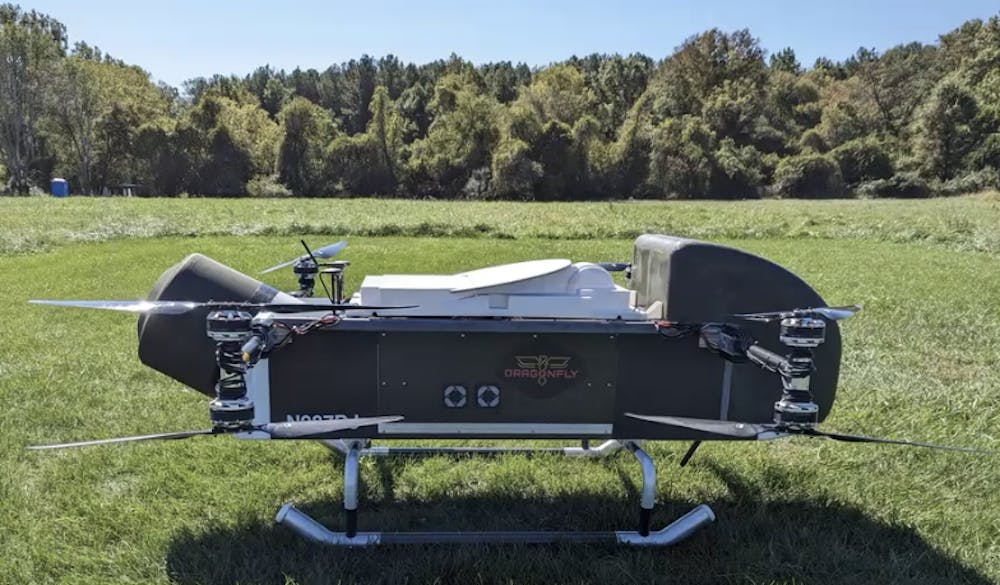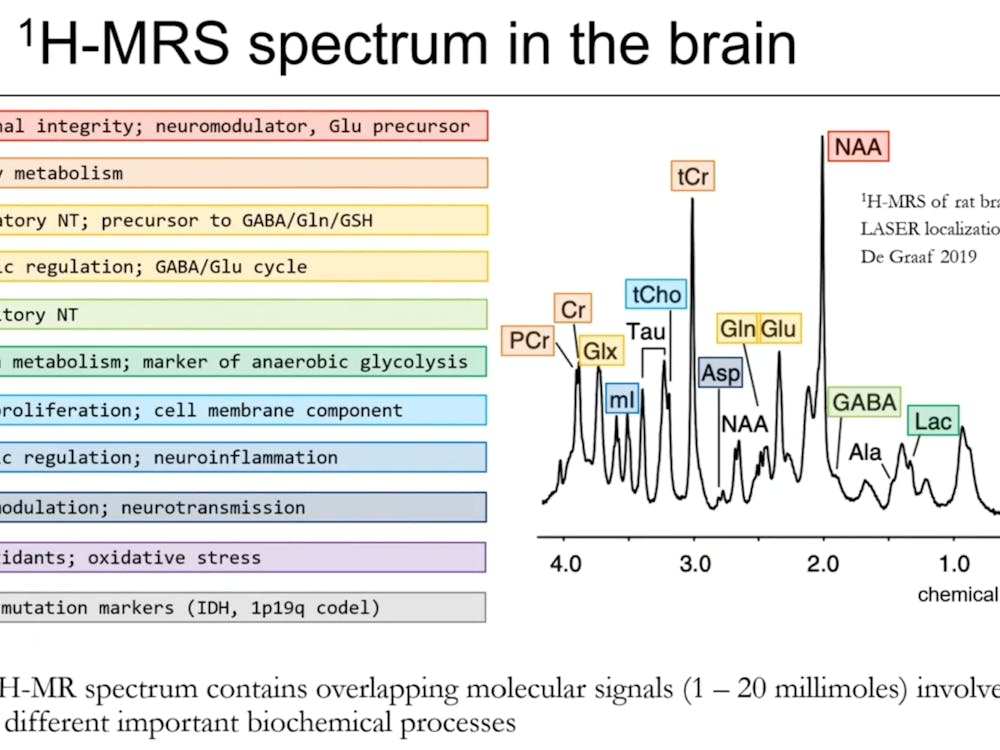Erin Sutton, flight dynamics model validation lead for NASA’s Dragonfly mission, visited to the Laboratory for Computational Sensing and Robotics on Sept. 10 to share her work on the Dragonfly, a car-sized rotorcraft whose goal is to fly through the methane-rich atmosphere of Saturn’s largest moon, Titan. The seminar highlighted the challenges of validating flight dynamics for Titan’s environment, a notoriously hazy, treacherous terrain, and how Sutton’s team continues to push the boundaries of aerospace engineering and planetary exploration.
Nearly ten years ago, NASA’s Curiosity rover made global headlines and became a milestone in space exploration after landing on Mars’ Gale Crater. Since then, it has made invaluable contributions to science, studying Mars’ habitability, its watery past and its organic chemistry. However, rovers such as Curiosity are limited in range and ability. They cannot cover more than a few kilometers over several years and cannot traverse certain types of landscapes. This limitation has proven to be a significant obstacle to our exploration of space.
In order to overcome this limitation, aerial enhancements have been expeditiously developed, setting the stage for Dragonfly, a nuclear-powered rotorcraft designed to hop across Titan’s harsh terrain. Dragonfly will not only cope with Titan’s environmental constraints but also cover far more ground in a single flight, greatly improving extraterrestrial flight dynamics.
Sutton, who completed her PhD at Hopkins under Professor Noah Cowan in 2017 before joining the Applied Physics Laboratory (APL), focused on innovating rotorcrafts to tackle Titan’s unique atmospheric conditions. For context, Titan’s atmosphere is 1.5 times denser than Earth but only possesses 14% of Earth’s gravitational force, which are conditions that exist nowhere else in the solar system.
Her team investigated how these conditions actually make flight easier than on Mars. Though previous missions relied on wheeled vehicles for stability, Sutton demonstrated that Dragonfly's aerial mobility opens up scientific opportunities.
Sutton first addressed the problem by reworking how flight models were adapted. Previously, they were sampled from Mars helicopter designs. Then, she and her team discovered that by identifying space model parameters and reducing the number of parameters to seven major parameters, they would be able to successfully reconceptualize the flight dynamics. In this consideration, the team took atmospheric chemistry effects and methane-based weather patterns into account.
“The models that work perfectly for helicopters on Earth or even Mars simply don't apply when you're dealing with methane rain, hydrocarbon dunes and an atmosphere denser than Earth's,” Sutton remarked.
This planetary flight model Sutton is working on cannot fly on Earth, which makes her work all the more fascinating. Sutton’s team is one of the teams across the country to employ multiple validation approaches. In addition to using the standard, FlightLab, a high-fidelity aerodynamics simulation that captures rotor-rotor and rotor-fuselage interactions missing from standard models, they conduct wind tunnel tests at NASA Langley using heavy gas to partially simulate Titan’s dense atmosphere.
"We can't perfectly replicate Titan conditions on Earth," Sutton noted, "but we can get close enough to validate our modeling approach." The team has developed a half-scale Dragonfly and demonstrated its flight at the APL's test facility. While not an aerodynamic analog to the vehicle that will travel to Titan, this 150-pound drone simulates the control algorithms that will guide Dragonfly across Titan's surface.
Sutton's presentation also revealed how a technique, system identification, which she acquired during her time at Hopkins when studying electric fish behavior, will also help ensure Dragonfly's success. By sending frequency sweeps, or “chirps,” through the control system and analyzing the responses, her team identifies discrepancies between its models and reality.
One particularly challenging finding they found involved conditions during descent, where complex wake interactions between Dragonfly's eight rotors create control difficulties not predicted by standard models. Sutton explained that in descent, the wake from the top front rotor completely washes out the rear bottom rotor, forcing the controller to compensate by reducing that rotor's speed, but then case the loss of control authority.
“And then we lose control authority because now we don't have control over that rotor. This was a surprising finding from the flight dynamics study,” she remarked. “It's a whole-vehicle problem that [only system identification could reveal].”
These discoveries have led to model updates, including the switch from two-bladed to three-bladed rotors to reduce vibrations, a change that required complete revalidation of their flight dynamics models.
Sutton’s work extends far beyond technical achievements. By deploying Dragonfly on Titan, we will be able to explore impact craters where liquid water and organic compounds may be mixed, potentially hinting at life. The rotorcraft's mobility, from being able to navigate methane lakes to dunes, will enable us to search for prebiotic chemistry on another world.
Regarding the mission's timeline, Sutton expressed confidence in the 2028 launch date, with arrival at Titan expected in 2034. Her team continues to refine models through wind tunnel tests scheduled for November.
"NASA in general tends to be pretty risk averse, especially for these missions where there's only one vehicle,” Sutton said. “So they only get one shot at it. But that’s why these missions push us to think creatively about exploration and our place in the cosmos."





